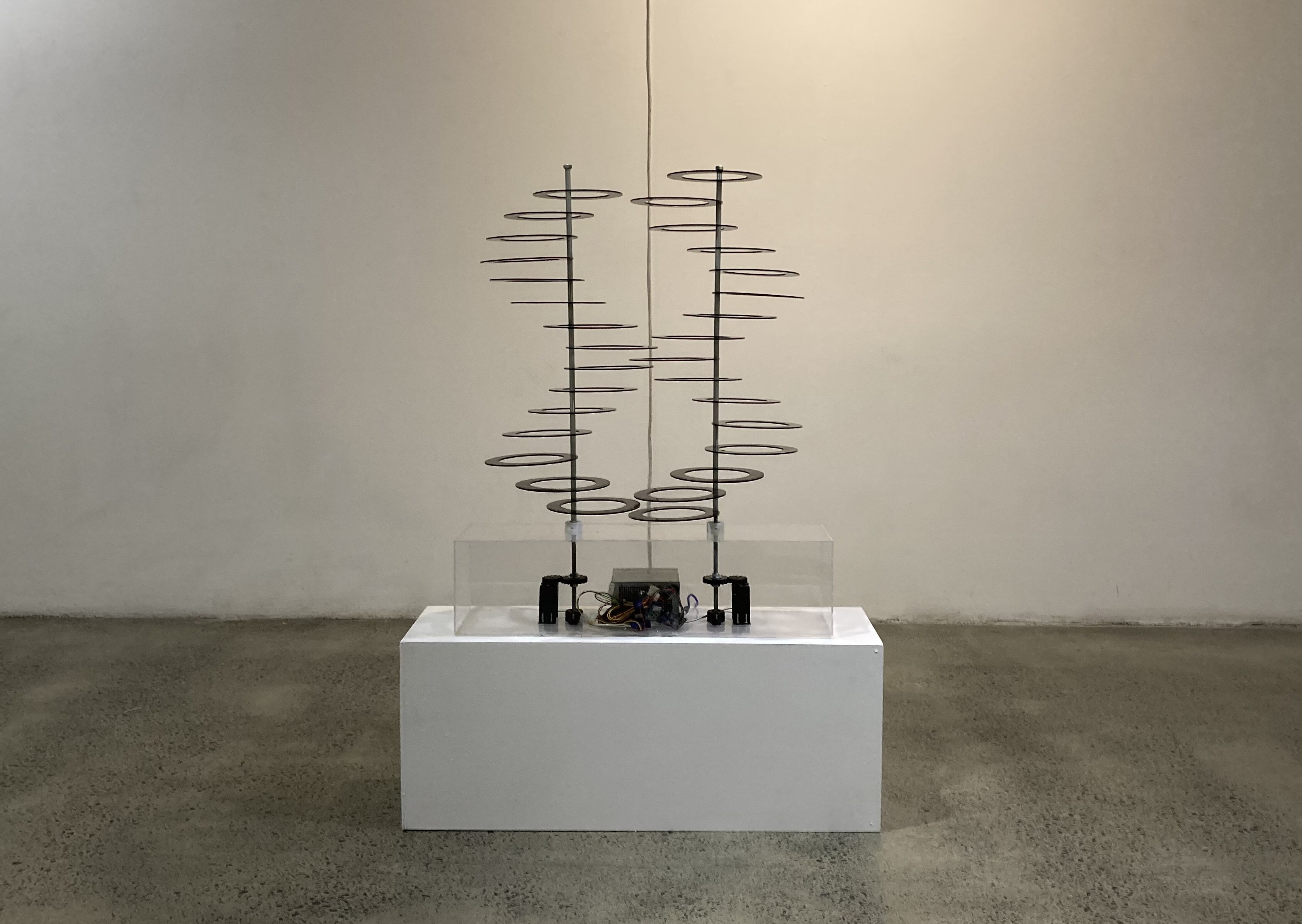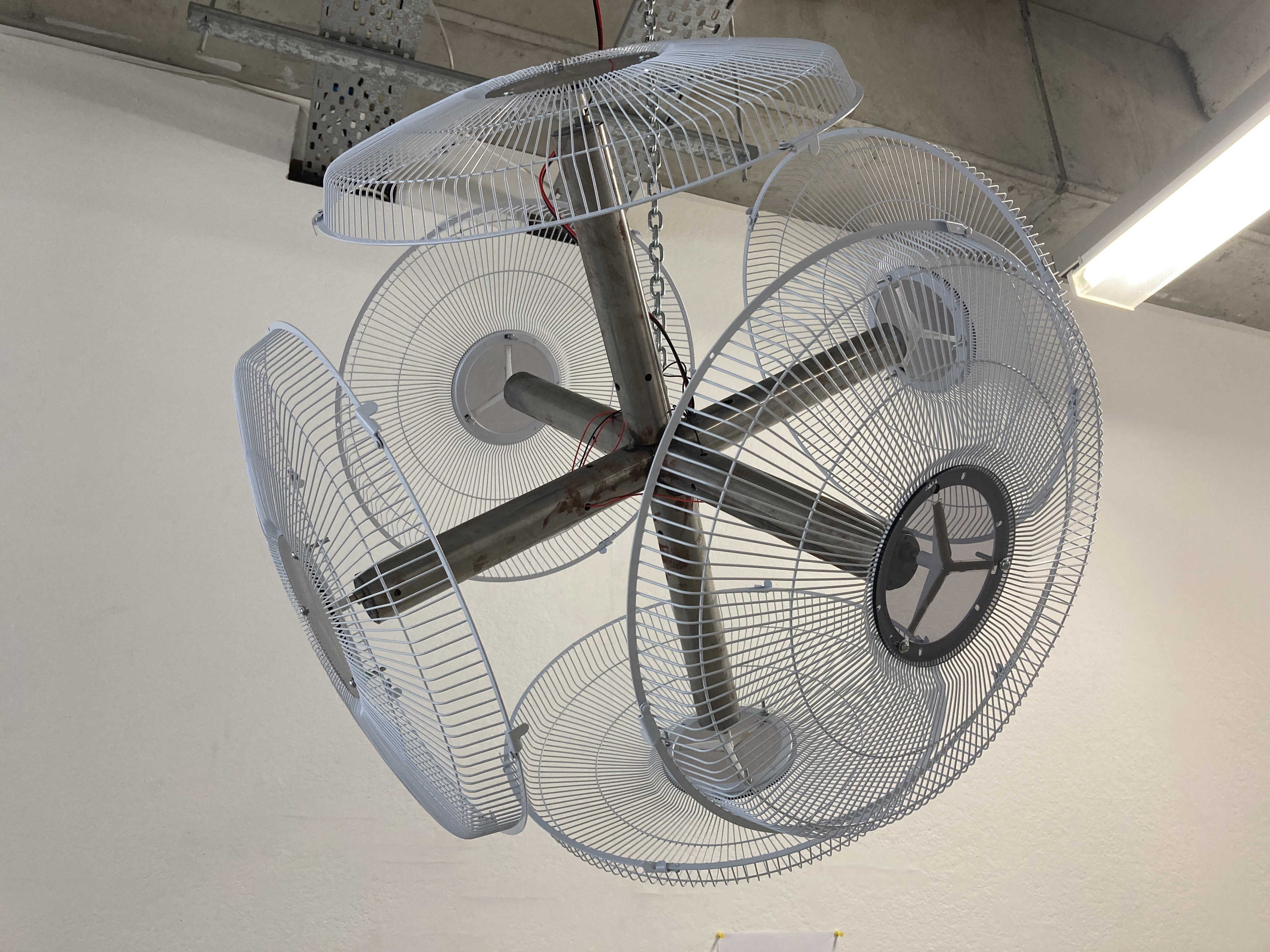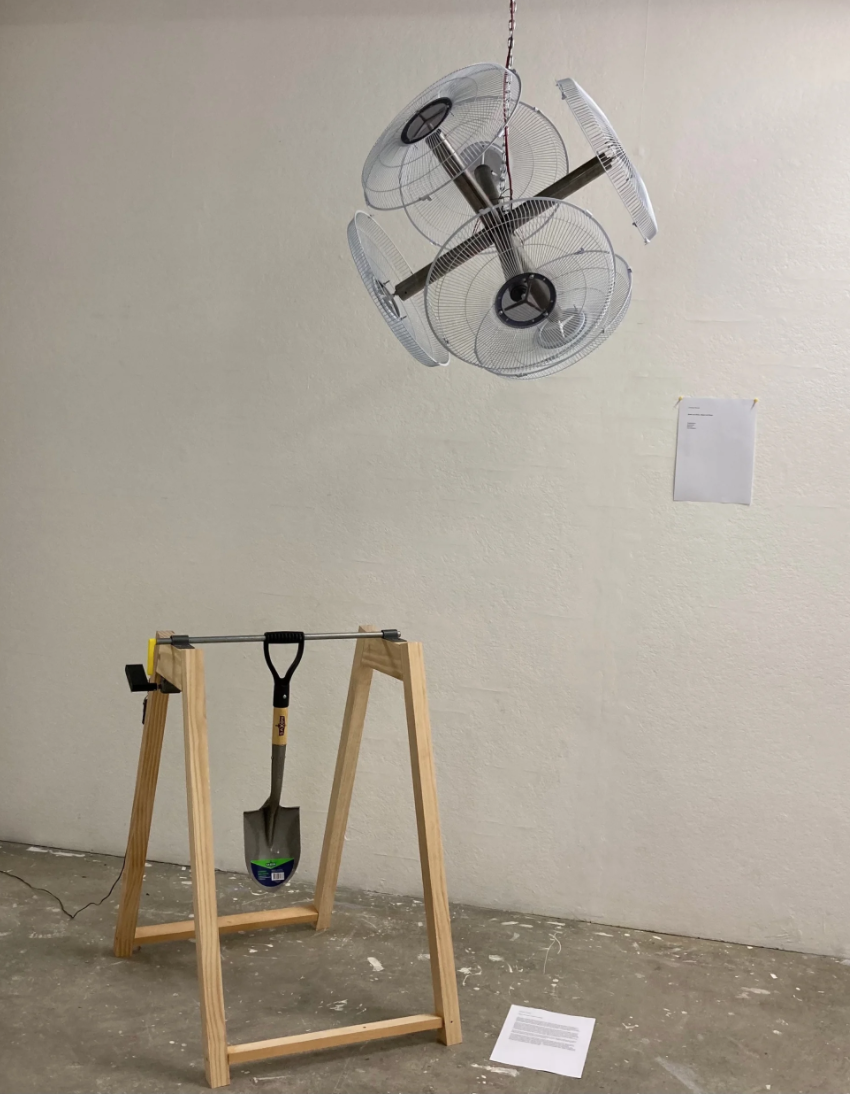JOHNLEVY SUAREZ ROCREO
ABOUT

ARTWORK
CONTEXTUAL STATEMENT
This sculpture and intermedia project is driven by a fascination with amalgamating mechanics, art and technology. These motor-driven sculptures use simplistic and elementary mechanisms employing principles of rotation and oscillation put the materials into motion and as a result of this recurring movement patterns are generated. Thus to creating illusionary and rhythmic visual complexities within kinetic sculptures.
This body of work explores the relationship between Coding and Choreography through the movements generated from these sculptures. Dancers, just like computers, are already very capable of performing a great deal of things. However, dancers often require the presence of choreographers to generate movement sequences. Since computers are unable to independently think for themselves, they require programmers to provide them with sets of instructions in order to perform specific commands. Coding is basically a process of designing an executable computer program to accomplish a specific computing result and to perform specific tasks using sets of codes and commands. Much like the process of choreography whereby a choreographer builds sequences of movements of physical bodies in which motion and form are both specified to be performed by dancers. With my works I draw a line of connection between the two by using coding to produce a choreography that is logical to the performance ability of the machines.
My process of making is highly dependent on technology; I utilize technology such as computer aided design (CAD), laser cutting, 3D printing and computer programming. Through my sculpture I also highlight the dependence of modern society to technology. I am aware that with major technological advances, technology can surpass human capability and can be seen in my work by overriding the human body by my moving sculptures. Since choreographing on the human body has its obvious limitations; to a certain extent the human body eventually gets exhausted, whereas my machines are capable of performing movements for a much longer period creating the illusion of perpetual motion.
I selected materials such as metal, acrylic and plywood string and wire. These types of materials are considered to be industrial in their ordinary usage and often can be seen within our mundane environments. By using a limited selection of plain materials, it ensures that movement is the most evident aspect of his work. When the machines start to perform, the aim is for the structures to become almost imperceptible, drawing all the attention to the motion and emerging patterns which appear as movement blurs into form. Thus, the mesmerising ‘image’ becomes the performer, the star of the show.
STUDIO PRACTICE
RESEARCH
PAST WORKS
PROFESSIONAL PRACTICE
Johnlevy is a 3rd year student majoring in Sculpture and Intermedia in AUT. He is fascinated by the amalgamation of mechanics, art and technology. He produces motor driven sculptures using simplistic and primitive mechanisms employing mechanical principles of rotation and oscillation to create visual complexities within his robotic sculptures. His robotic kinetic sculptures explore the relationship between Programming and Choreography through the movements generated from these sculptures in regards to the history of performance art drawing inspirations from artists like Allan Kaprow and Oscar Schlemmer.
Inspired by the realms of dance and being a dancer himself, movement is the most integral component of his works His sculptures employ mechanical principles of rotation and oscillation to put materials into motion, as a result of this recurring movement patterns are generated. He carefully selected materials such as metal, acrylic sheets, plywood sheets, strings and wires. These types of materials are considered to be industrial which are ordinary and often can be seen within our mundane environment. With these limited selection of materials, it is ensured that movement is to be the most evident aspect of his work. When his sculptures start to perform, he aims for his structures to almost become imperceptible, drawing all the attention to the motion and patterns thus becoming the star of the show.
For each of the sculptures, a specific analog mechanism is assigned which, despite its fundamental simplicity, generates visual complexities once operating- particularly when the mechanism is operating continuously giving the illusion of perpetual motion. When constructing and planning for his sculptures, he ensures to relate formal sculptural elements with ballet principles.

Johnlevy Rocreo, 07-2021, Pas de Deux Perspex glass, metal, electronics 2mx1.5mx1.5m
Computer Programming is basically a process of designing an executable computer program to accomplish a specific computing result and to perform specific tasks using sets of codes and commands. Much like the process of choreography whereby a choreographer builds sequences of movements of physical bodies in which motion and form are both specified to be performed by dancers. With his work he draws a line of connection between the two by using coding to produce a choreography that is logical to the performance ability of the machines.
His process of making is highly dependent on technology; he utilizes technology such as computer aided design (CAD), laser cutting, 3D printing and computer programming. Through his practise he also highlights the dependence of modern society to technology. He is aware that with major technological advances, technology can surpass human capability. With his works, he highlights this by overriding the human body by his robotic sculptures. Since choreographing on the human body has its obvious limitations; to a certain extent the human body eventually gets exhausted, whereas his machines are capable of performing movements for a much longer period creating the illusion of perpetual motion.

Johnlevy Rocreo, 11-2020, Ballon, Hanging Kinetic Sculpture, Fan Cage, metal pipes, DC motors, electronics, acrylic sheets, PLA. 1mx1mx1m

Johnlevy Rocreo, 10-2020, Installation: Ballet and Body, Object and Body, 2 kinetic sculptures powered by DC motors.



